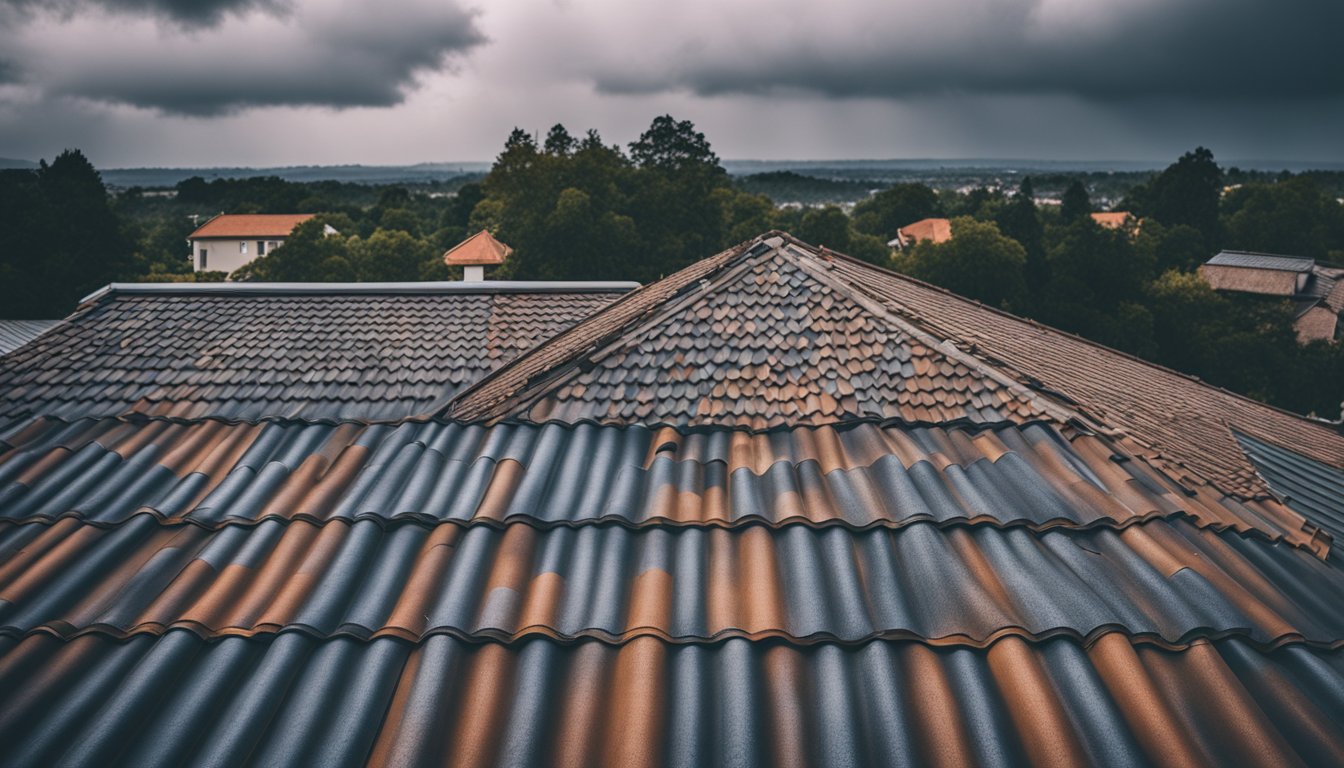Late updated: 24 Nov 2024 10:11
Written by: Oliver Bennett
Impact of Climate Change on UK Roofing Materials: Assessing Durability and Adaptation Strategies
The impact of climate change on our environment is undeniable, and the UK’s roofing industry is not immune to these changes. As we face increasing risks of overheating and flooding, the need to adapt our roofing materials becomes more essential than ever. Extreme weather conditions are likely to become more frequent, which means that the traditional materials and methods we have relied upon for years may no longer provide adequate protection.

We must consider alternative materials and solutions to improve resilience in our built environment. Whether through the use of cool roofs, which can reduce urban temperatures, or the sustainable benefits of green roofs, the possibilities are promising. The construction industry has a vital role to play in implementing these solutions to maintain the sustainability of our infrastructure.
Adapting roofing technologies not only addresses immediate climate risks but also aligns with the broader movement towards sustainability in the construction industry. By preparing now, we can help future-proof our cities against the climatic challenges ahead while enhancing the overall efficiency and safety of our buildings.
Key Takeaways
- Climate change necessitates stronger, adaptable roofing materials.
- The construction industry is crucial for promoting sustainable roofing.
- Innovative roofing solutions contribute to urban climate resilience.
Influence of Climate Change on Roofing Material Selection

Climate change is compelling us to rethink the materials used in our roofing projects. As extreme weather events become more frequent, the roofing industry must prioritise resilience and sustainability. Proper material selection can significantly mitigate flooding risks and encourage biodiversity through green infrastructure.
Adapting to Extreme Weather Conditions
Extreme weather events, such as storms and heatwaves, are increasingly common due to the climate emergency. Our choice of roofing materials must focus on durability and resistance. Materials like metal and slate are valued for their robustness and long lifespan. Metal, in particular, offers protection against strong winds and hail, while slate's natural properties provide an excellent barrier against water infiltration. Innovative materials, including advanced polymers and modified bitumen, enhance resilience by increasing flexibility and impact resistance. Integrating these materials helps us design roofs that withstand intense weather conditions while reducing maintenance costs.
Mitigating the Effects of Flooding
Flooding presents a significant challenge, especially as we anticipate warmer, wetter winters. Roofing strategies now often incorporate systems that support water management, such as blue roofs. These systems temporarily store rainwater, allowing controlled release, which reduces flooding potential. Using absorbent materials, such as specialised membranes and porous surfaces, can manage runoff effectively. Incorporating drainage systems directly into the roofing structure offers additional flood mitigation. Blue roofs not only manage water effectively but also provide insulation benefits, thereby offering multifaceted advantages in sustainable construction practices.
Promoting Biodiversity Through Material Choices
As part of addressing our environmental impacts, we are encouraged to embrace green roofs. These installations support biodiversity by providing habitats for various species, including birds and insects. Selecting materials that facilitate plant growth, such as lightweight soil mediums and water-retaining layers, is essential. Green roofs also contribute to urban cooling, reducing the heat island effect prevalent in cities. Materials play a pivotal role in maintaining plant health and retaining moisture, promoting thriving ecosystems. Emphasising green infrastructure in urban planning aids in fulfilling biodiversity targets and fostering ecological resilience.
Sustainability and the Future of Roofing in the UK
In the ongoing journey towards sustainable roofing solutions, the reduction of carbon emissions and the enhancement of energy efficiency are paramount. These efforts are crucial for mitigating overheating in buildings as the climate changes.
Reducing Carbon Emissions in Roof Construction
To combat climate change, reducing carbon emissions in roofing is vital. Construction projects across the UK, including places like Milton Keynes, are increasingly focusing on lowering both operational emissions and embodied carbon.
The aim is to achieve net zero carbon goals. Implementing materials with lower embodied carbon can significantly decrease the whole-life carbon footprint of a building.
Reusing existing materials during roof renovations and demolitions is another effective strategy to minimise environmental impact. Moreover, selecting sustainable roofing options, such as recycled metal or eco-friendly membranes, supports a greener agenda.
Energy Efficiency and Overheating
Increasing energy efficiency in roofing materials can substantially reduce the risk of building overheating, a growing challenge in the UK. As summers become hotter, effective insulation and reflective roofing surfaces are essential to keep indoor temperatures stable.
By retrofitting existing buildings with advanced materials, we can enhance energy performance. Options like green roofs not only provide excellent insulation but also combat urban heat by absorbing less heat than traditional roofs.
The integration of these solutions in new and existing structures is key to maintaining comfort while decreasing reliance on cooling systems. This transition is critical as we rethink our approach to building design in response to evolving climate conditions.
Frequently Asked Questions

We address common concerns about how climate change impacts roofing materials in the UK. Our insights focus on durability, adaptation to severe weather, and sustainable innovations in roofing technologies.
How does extreme weather associated with climate change affect the lifespan of roofing materials in the UK?
Extreme weather conditions, such as increased rainfall and higher temperatures, can accelerate the wear and tear on roofing materials. Materials may expand, contract, or degrade faster, leading to more frequent repairs and replacements.
What are the most durable roofing materials for homes in regions of the UK experiencing severe weather fluctuations?
Slate and metal roofing are regarded as highly durable choices. They withstand both extreme heat and heavy rainfall. Additionally, they have a long lifespan, reducing the need for frequent replacements.
Which roofing materials have been found to be most resistant to the increased rainfall patterns in the UK?
Clay and concrete tiles are notably resistant to water-related damage. Their density and structure prevent water infiltration, making them reliable for areas with heavy rainfall.
Are there any emerging roofing technologies or materials in the UK designed to mitigate the effects of climate change?
Green roofs and solar roofing have become popular, offering added insulation and energy efficiency. These technologies not only withstand extreme weather but also contribute to environmental sustainability.
How are traditional roofing materials in the UK being modified to cope with the changing climate?
Traditional materials like thatch are being enhanced with water-resistant treatments. Additionally, techniques like reinforced layering help traditional roofs cope better with increased weather stress.
What are the environmental impacts of sourcing and producing more resilient roofing materials for the UK housing market?
Manufacturing more resilient materials can lead to increased carbon emissions. However, innovations in eco-friendly production processes are helping to minimise these impacts. Sustainable sourcing and recycling efforts further reduce environmental footprints.
